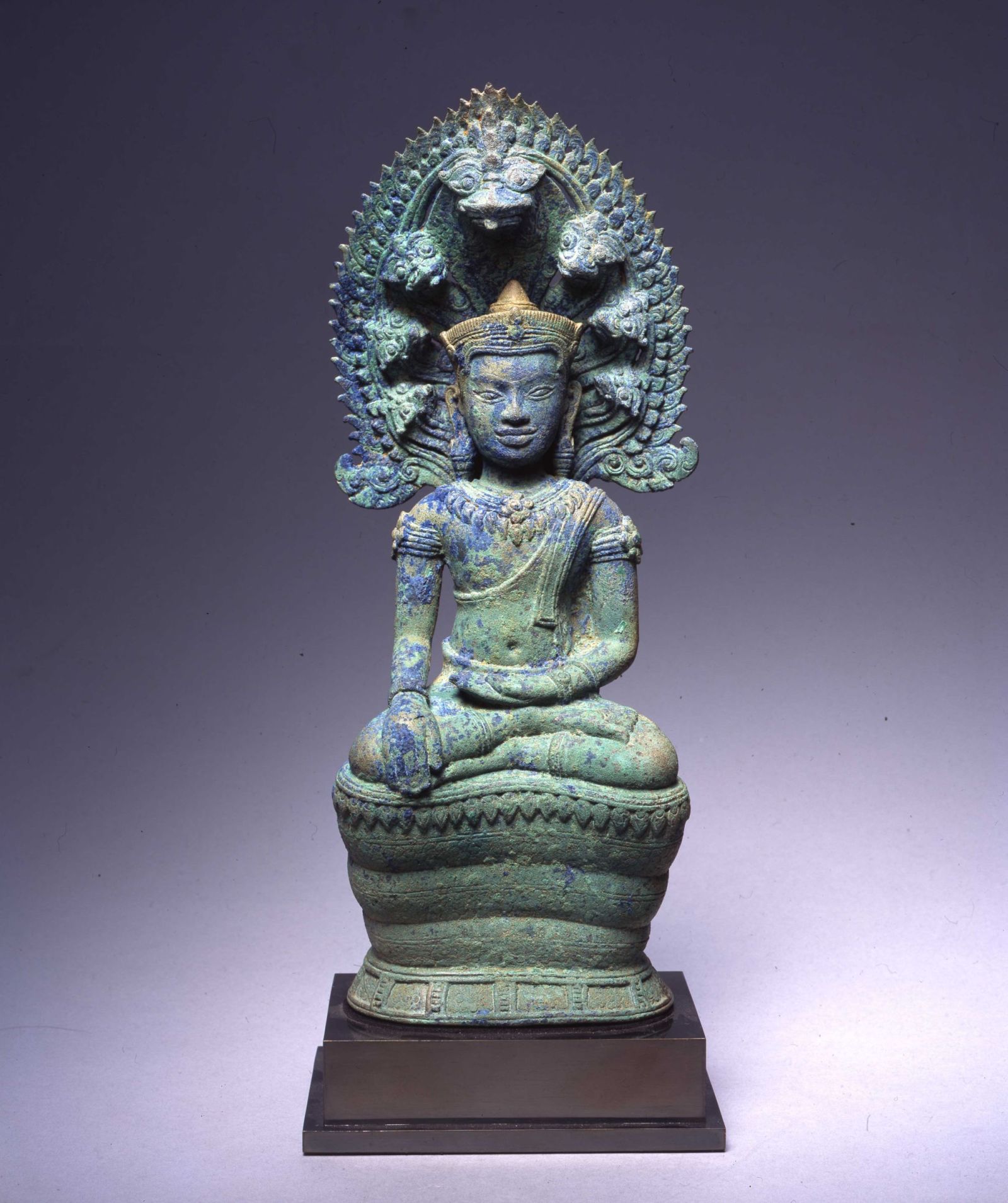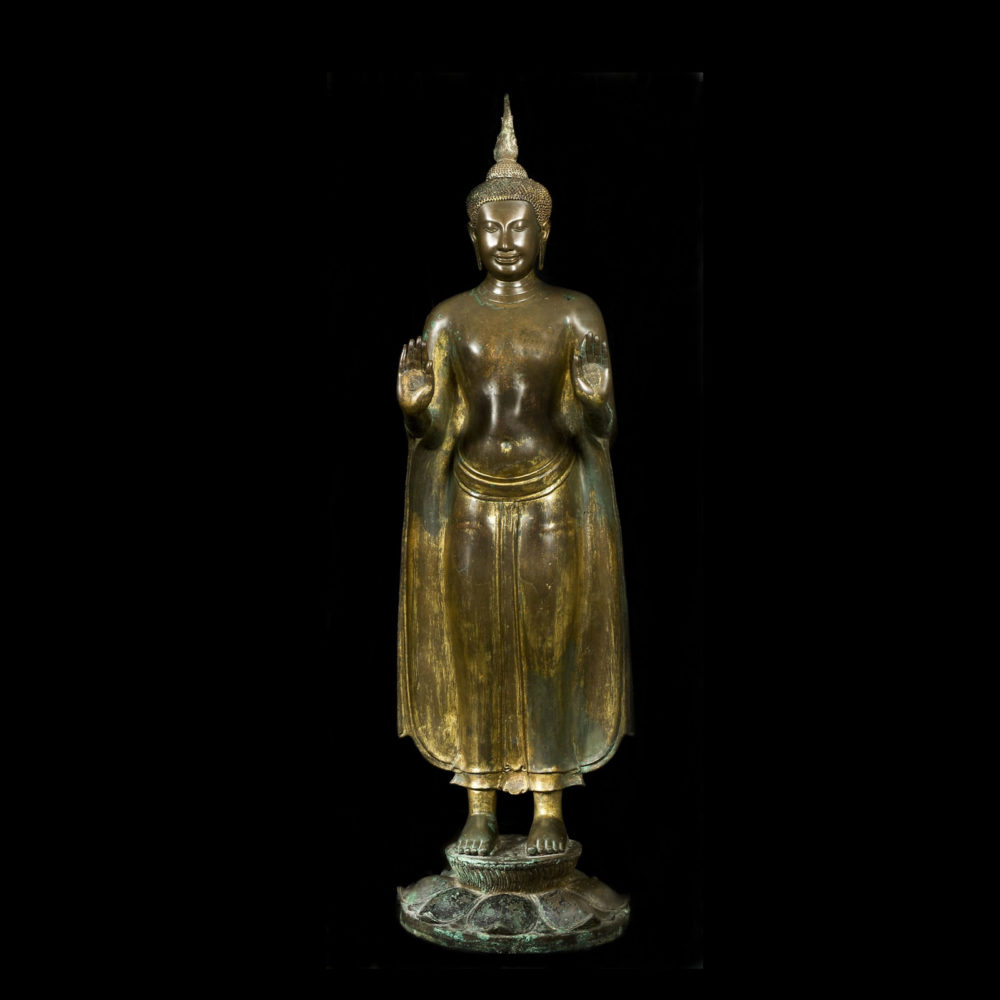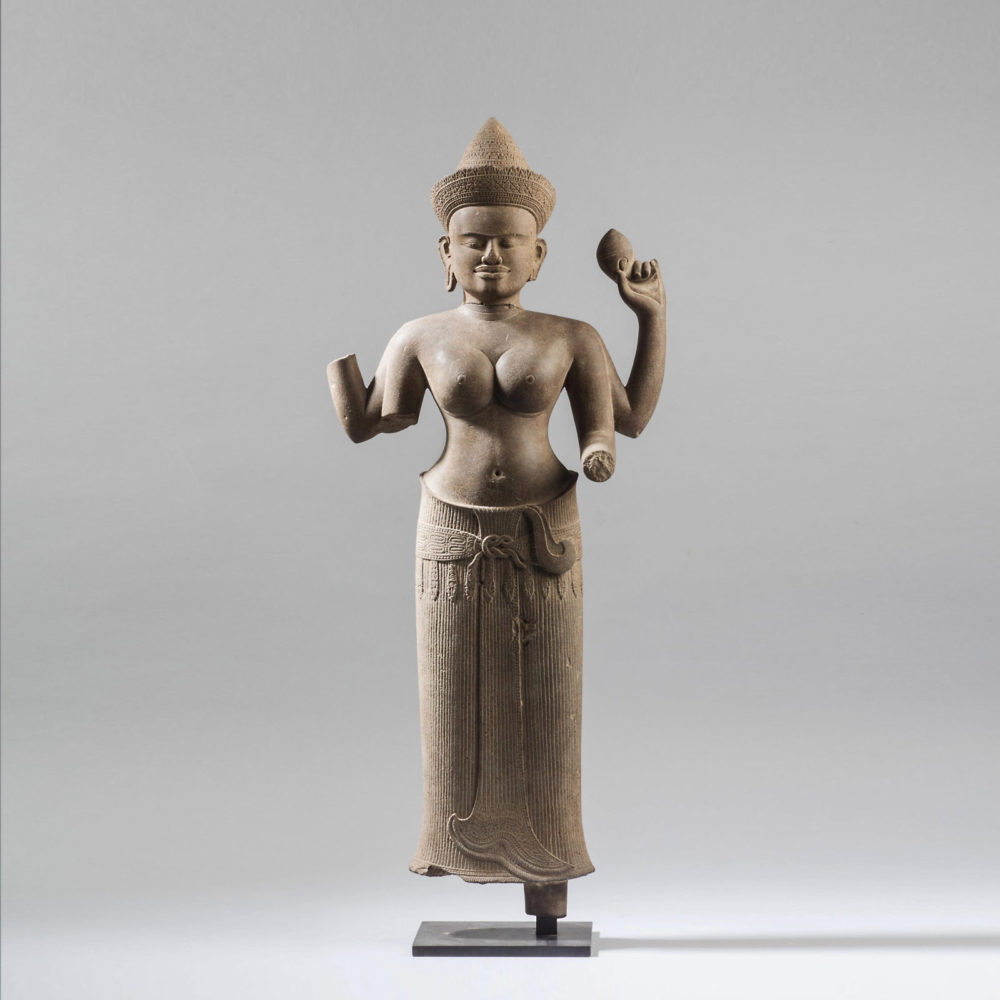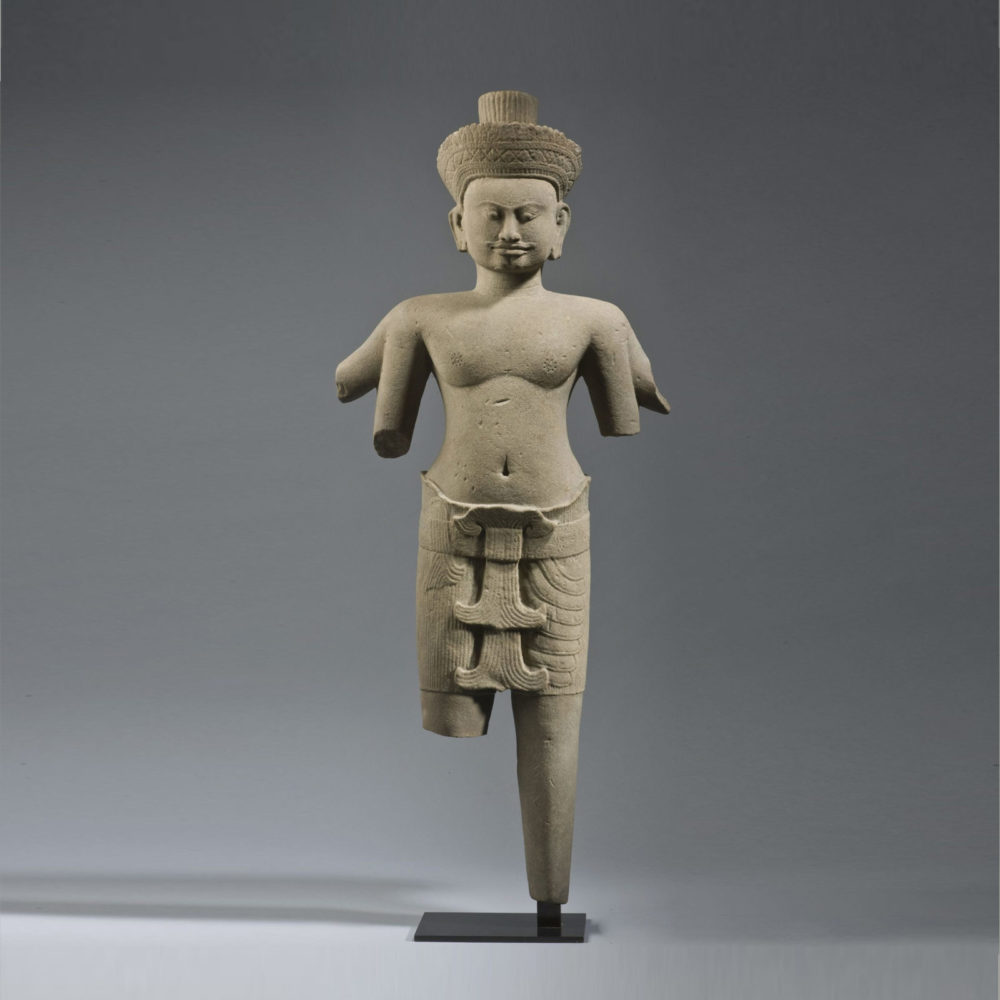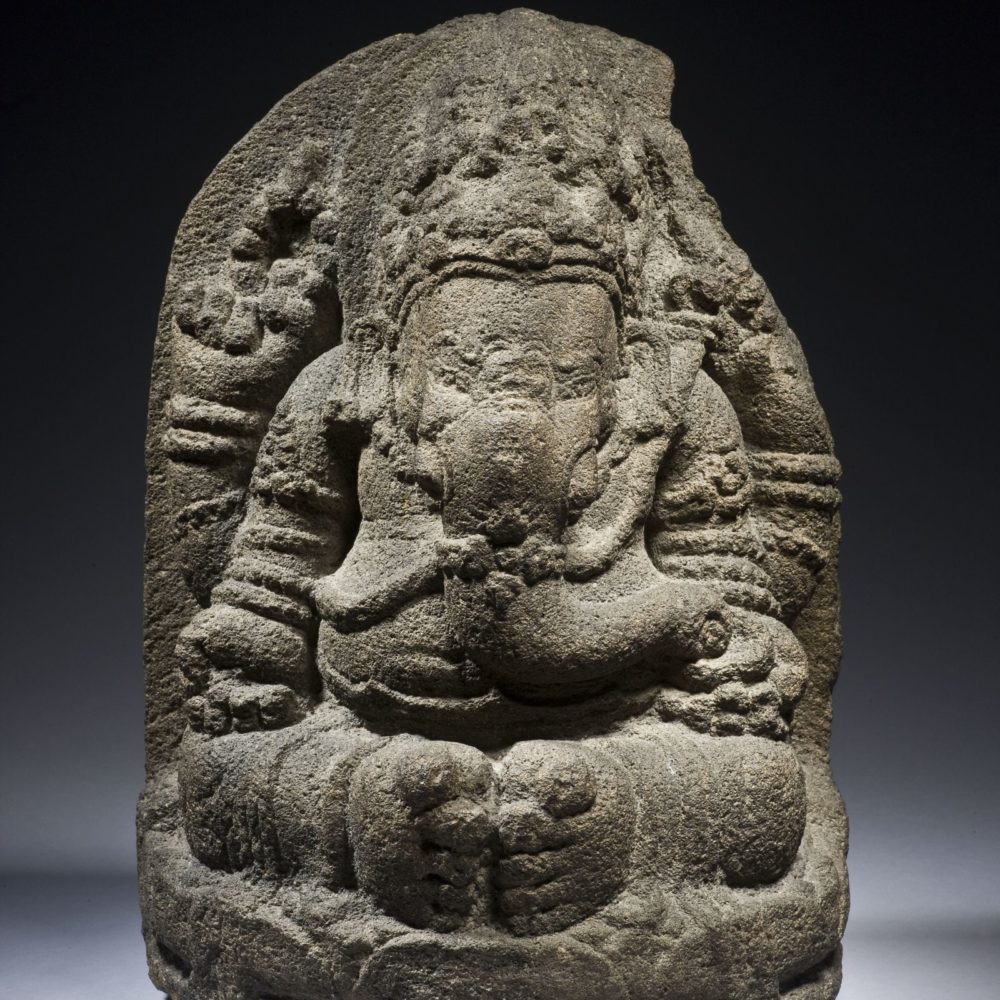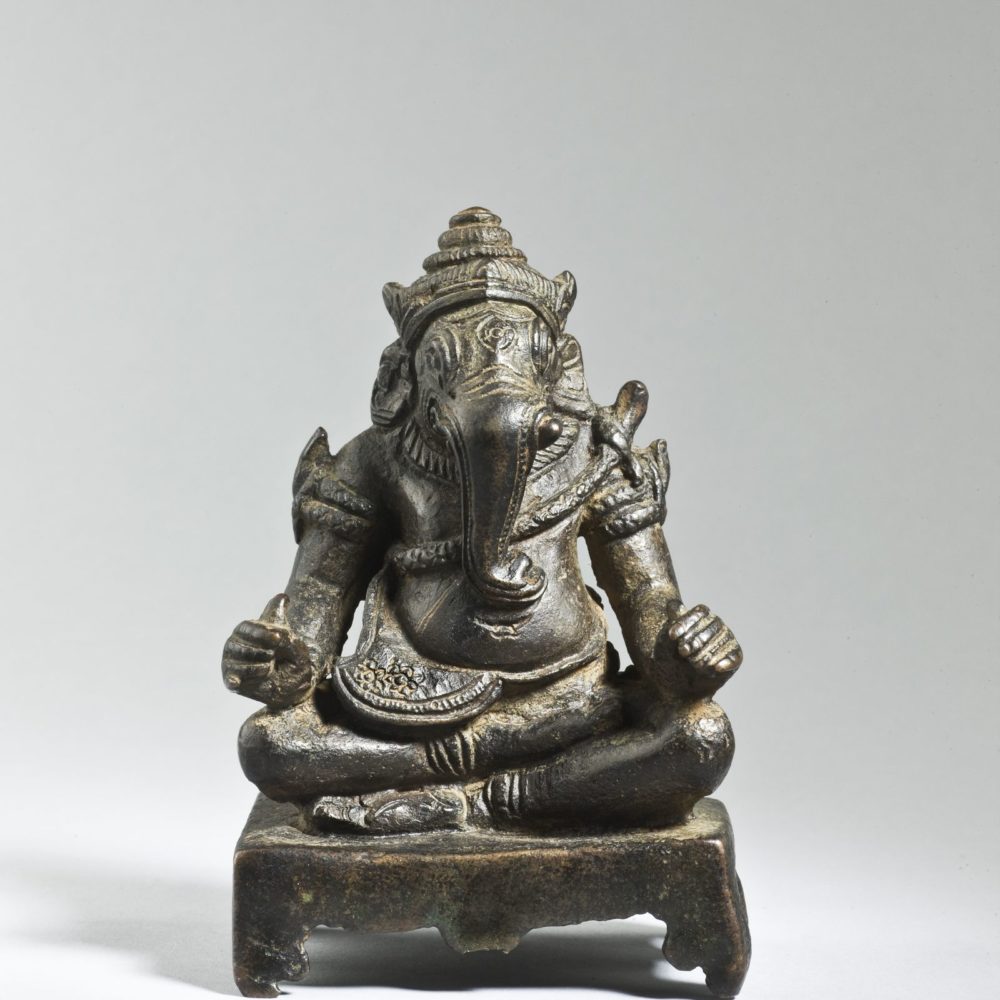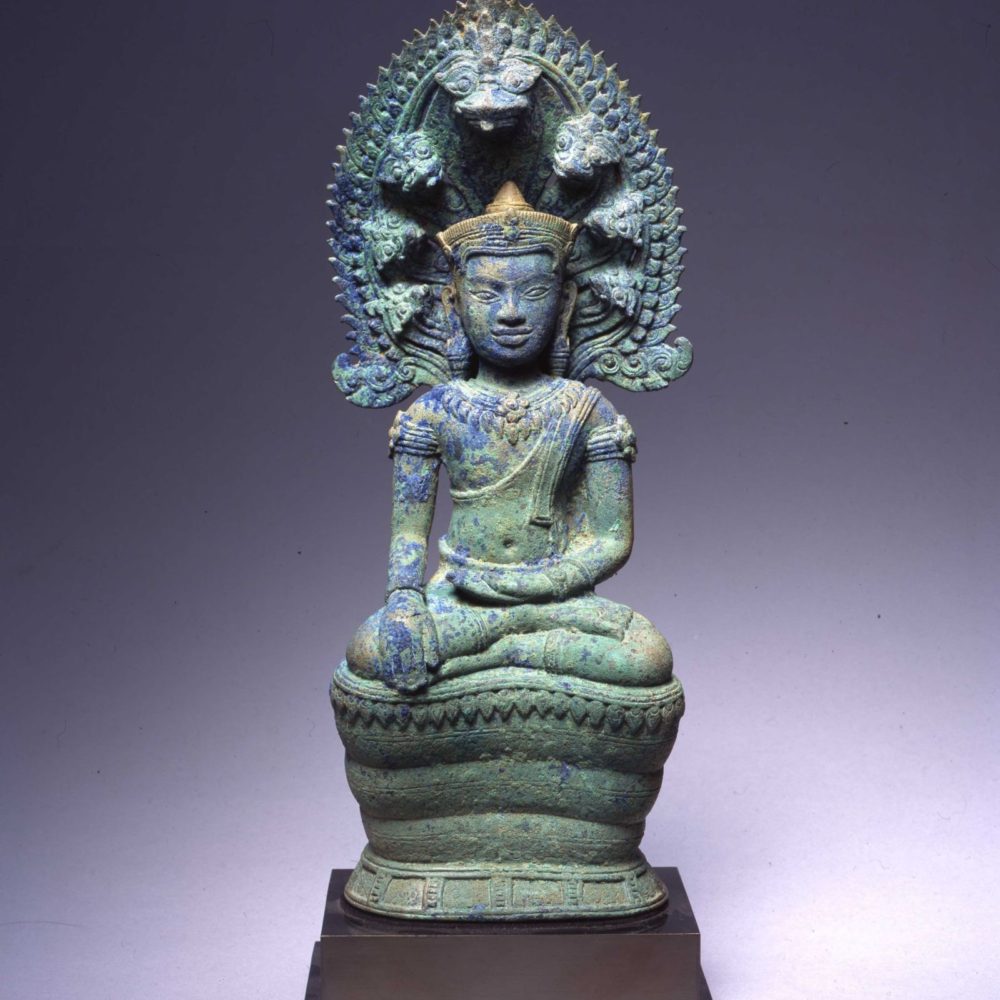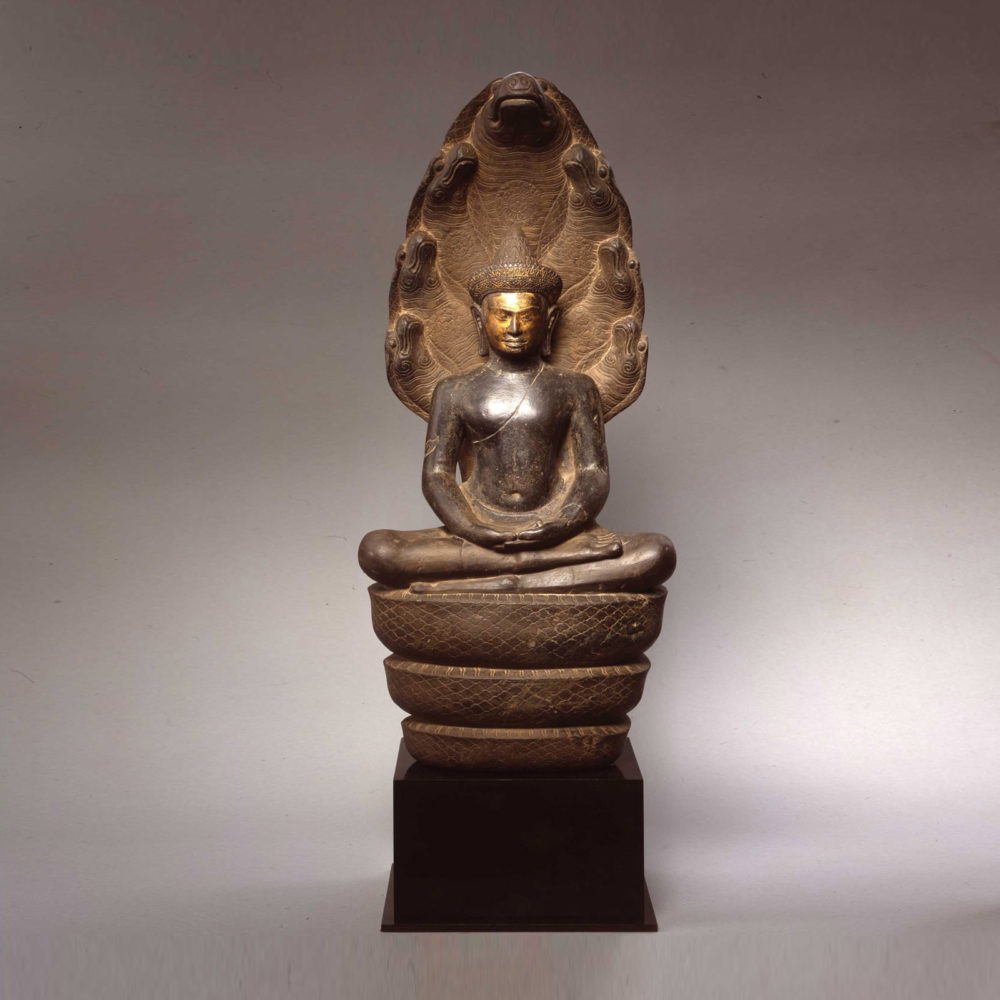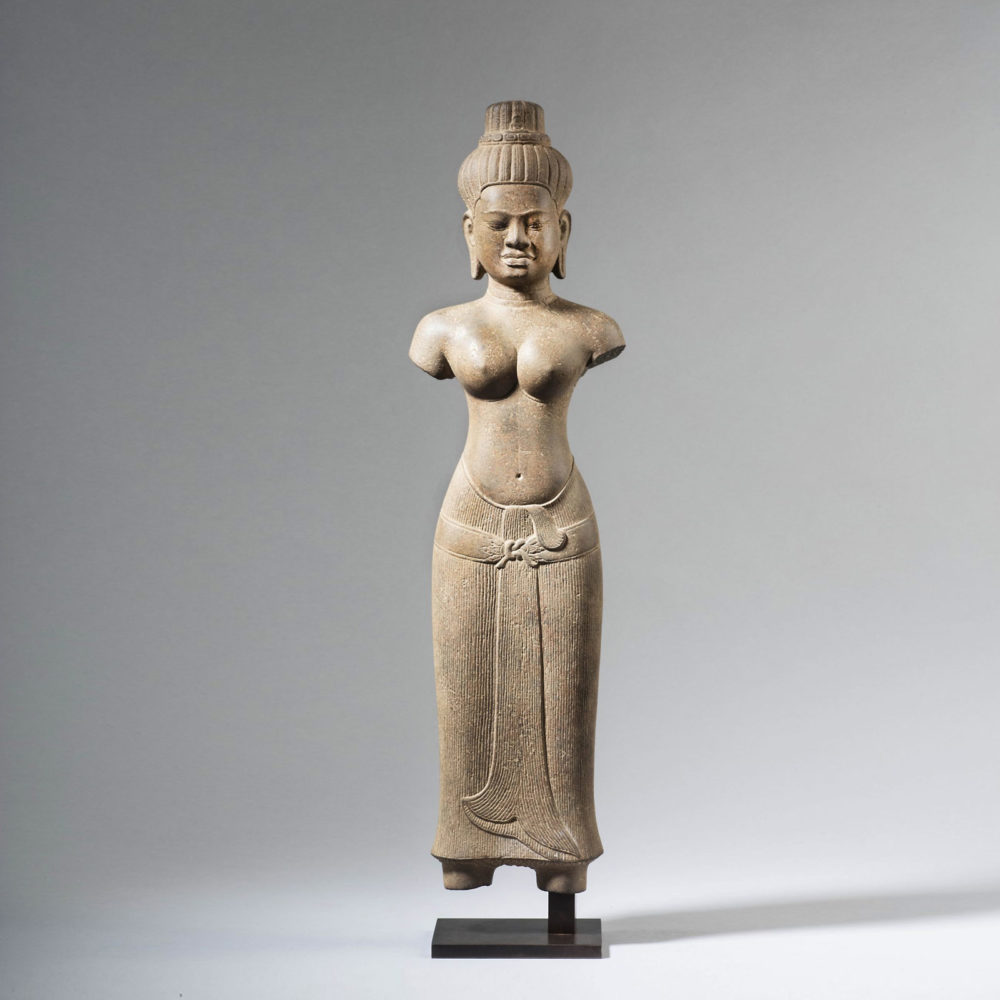A bronze Buddha
Angkor period, 12th/13th century, Cambodia
Height: 31.8 cm, 12.5 inches
Vishnu and the king of all serpents (or ‘nagas’), named Anantha, are depicted together in Indian art of the Gupta period, and fifth century ‘nagarajas’ (king serpents) with their multiple hoods can be seen protecting the figures in rock-cut sculptures at Ajanta – also dating to 5th century. Many centuries later, in the centre of the walled capital city of Angkor Thom, the Khmer worshipped such an image in the temple of the Bayon – but in Vishnu’s place was Buddha.
In the Angkor period, the coils of the serpent had evolved to resemble a type of throne upon which this Buddha is seated, in padmasana – his right hand in bhumisparsa (‘touching the earth’ mudra). Beneath the figure, a lotus seat rests upon the three rising and expanding coils of the cobra. The hood of the serpent is sculpted with seven heads, and these are thought to represent the seven times that Buddha Sakyamuni was encircled by a naga king whilst meditating during a raging storm. Another interpretation is that the naga with multiple heads, named Mucilinda, protected the Buddha who was at risk of drowning in the lake in which she dwelt.
The Buddha wears a sampot can kpin around his lower body and also an upper garment hangs over his left shoulder. He is adorned in the manner of a Khmer ruler – with armlets, bracelets, earplugs that hang from the elongated lobes, a necklace and crown-type headdress. The eyebrows form a continuous line, the eyes are finely delineated, and the mouth is generous and full. The hood of the serpent is cast separately – the base of the bronze slotting into the bottom of the hood behind the Buddha’s back. The seven heads emanate from a lotus medallion at centre bottom of the hood’s front; the medallion is depicted both on the front and back (but is hidden at the front by the Buddha’s head). Beneath the three coils of the naga ‘throne’ is an integral base – decorated with hatched and floral designs. The bronze has become oxidized to give this compactly modelled piece an overall surface colour of green with patches of blue.
Authentication
Oxford thermoluminescence test no. N108b29 confirms the dating.
Similar Examples
Asian Art at the Norton Simon Museum, Volume 3: Art from Sri Lanka & Southeast Asia, by Pratapaditya Pal – pages 209 & 210.
Adoration and Glory: The Golden Age of Khmer Art, by Emma C. Bunker and Douglas Latchford, published by Douglas Latchford in association with Art Media Resources, Inc. Chicago, Illinois, 2004 – pages 282 & 283.
Indian Sculpture: Masterpieces of Indian, Khmer and Cham Art, The Hamlyn Publishing Group, 1962 – plate no.188.
Entdeckungen: Skulpturen der Khmer und Thai, Museum fur Ostasiatische Kunst der Stadt Koln, 1989 – pages 112 & 113.


